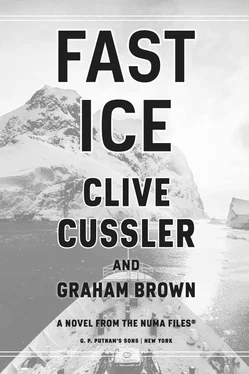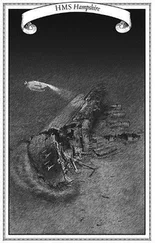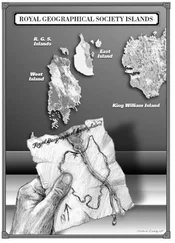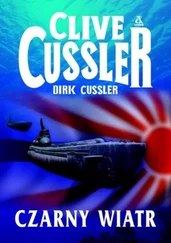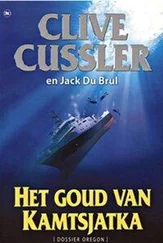Rudi looked up to see Hiram Yaeger leaning against the doorjamb, arms folded across his chest.
“A revolution you will no doubt be at the forefront of,” Rudi said.
“Maybe,” Hiram said. “Although, realistically, we’re years away from the robot takeover.”
“Good,” Rudi said. “That’ll give me time to erase the computer’s memory, so it won’t hold my crimes against me. We have more immediate problems anyway. Kurt came up empty in South Africa.”
“He didn’t find anything?”
“He found something,” Rudi said. “But it was a whole lot of nothing.”
Yaeger furrowed his brow. “A lot of that going around. Kurt asked me to study the historical record from the Schwabenland expedition to see if we could match that photo to a particular flight and landing location.”
“Sounds like a good idea,” Rudi said. “But from the look on your face, I’m guessing it didn’t work out.”
Yaeger came in and sat down. “I’ve had our computers look through every known source of information about the Schwabenland expedition. Public, private, even classified records from an old OSS file. There’s no match for that picture anywhere in the existing photographic record.”
“Could you have missed something?”
“Doubtful,” Yaeger said. “I even had the photo digitized and put each of the characters in the picture through a facial recognition program. The system compared the images to photos of the known explorers and crew members on the ship.”
“How’d that work out?”
“More nothing,” Yaeger said. He held up a hand to prevent Rudi from interrupting. “Now, I’ll admit we don’t have photos of every deckhand and third-class enlisted sailor that worked on the ship, but there are multiple, high-quality images of all the officers, air crew and scientists who participated.”
“And?” Rudi asked, already knowing the answer.
“Not a single person in that photograph was part of the Schwabenland expedition. The men in that picture simply weren’t on the ship.”
Rudi drummed his fingers on the desk. Some information was better than none. Maybe this told them they were looking in the wrong direction. “Could the photo be a hoax?”
Yaeger shook his head. “Not a computer-generated one. I’ve run our deep fake analysis a couple different ways. The pixels, the light angles, the shade and the photographic depth are all legitimate. There are no artifacts to suggest the photo was manipulated or subject to editing. Whatever else it is, that picture is not computer generated or photoshopped.”
“What about a real photograph but staged?” Rudi suggested.
“Possibly,” Hiram said. “But you’d have to find an old Dornier flying boat, restore it to flying condition, take it out to a frozen lake and snap the photo. You’d also need a vintage camera with authentic glass lenses and film with the exact ratio of silver and chemical levels to match what was produced in Germany in the late 1930s. Which would have to be made from scratch, I might add, because that type of film isn’t produced anymore.”
“That’s a lot of trouble to go through for a single picture covered in graffiti,” Rudi admitted. “If it’s not a hoax and it isn’t from the Schwabenland expedition, who and what is it a photo of?”
Yaeger shrugged. “The only way to figure that out would be determine where Cora got the picture from. And I think I have an idea how we can do that.”
Rudi perked up. “That’s what I like to hear. Just tell me it doesn’t involve a psychic or a soothsayer.”
“Neither,” Hiram said. “Just a special blue light and the actual printed copy of the photograph. The one in Kurt’s possession. Assuming he hasn’t lost it.”
“The printed copy?” Rudi said. “Not the original picture?”
“Correct.”
Rudi was baffled. “How will that solve the problem?”
“Well,” Yaeger said. “Few people know this, but the vast majority of modern printers embed microdots in every single page they print.”
“Microdots?”
“Tiny dots of ink,” Hiram said. “Offset from the color of the actual printed page. Usually it’s done using a shade of yellow. Each dot is so small and light that it’s invisible to the naked eye. And with thirty or forty spread throughout the page, it doesn’t alter what’s printed either. But the end result is a pattern, readable like a QR code. This pattern records the time and date of printing and includes a unit identification code that reveals the make, model and serial number of the printer that produced this particular page. Once we have that information, all we have to do is check with the manufacturer and find out who they sold that printer to and we can find out where Cora printed the photo, helping us to track down the original.”
Rudi eyed Hiram suspiciously. “Which printers did you say are doing this?”
“Almost all of them.” Yaeger said. “Anything manufactured in the last ten to fifteen years or so.”
“Ours, too?”
“Of course.”
“You’ve got to be kidding me.”
Hiram shook his head. “It’s ubiquitous,” he said. “You could pluck any piece of paper, from any random garbage can, from anywhere in the world, and within minutes I could tell you precisely where and when it was printed and on what machine. We’ve used this method to catch people who leaked documents to the public or who stole corporate secrets. We’ve even caught counterfeiters who were printing their own money using this method.”
“Sounds like the robot takeover is closer than you think,” Rudi said. “With my phone listening to every word I say and my computer keeping a record of everything I do, and now my printer ratting me out if I use it for any non-approved purpose, it feels like Big Brother is watching.”
“Oh, he is,” Hiram said. “Big Sister, too. And the entire extended family. But in this case, we can use it to our advantage.”
29
UNIVERSITY OF JOHANNESBURG
Back in Professor Watson’s laboratory, Kurt, Joe and Leandra listened to Yaeger’s instructions over a speakerphone.
“Sounds pretty simple,” Kurt said. “Stand by.”
With great care, Kurt pulled out the printed sheet of paper with the old Nazi photograph on it. The page had spent the better part of a week folded up into a pocket-sized square and would need to be smoothed out before they scanned it.
While Kurt worked to ease the creases out, Joe, Leandra and Professor Watson modified a scanner to emit the wavelength of blue light that the test required.
“The new LEDs are in,” Joe said, putting the machine down.
Leandra switched it on while the professor used a photometer to check the wavelength. “We’re within the parameters.”
Kurt looked over. “I won’t make any jokes about how many of you it takes to change a lightbulb.”
“Good,” Joe said. “Because that sheet of paper was getting the best of you for a while.”
Kurt laughed. “I’ll have you know my job requires precision workmanship.”
On the speaker, Yaeger cleared his throat to let them know he was still there, waiting.
Kurt handed the delicately flattened sheet of paper over to Leandra, who inspected his effort before placing the paper down on the scanner and closing the lid.
“Ready,” she said.
Joe pressed the button.
They took four scans, each at maximum resolution. The scans were run through a program that melded all four together and then performed a digital search for the microdots.
Kurt sat with the others watching the computer screen for the results. For several seconds, there was nothing. Then a pattern appeared.
“Looks like a random distribution,” Leandra said.
Читать дальше
